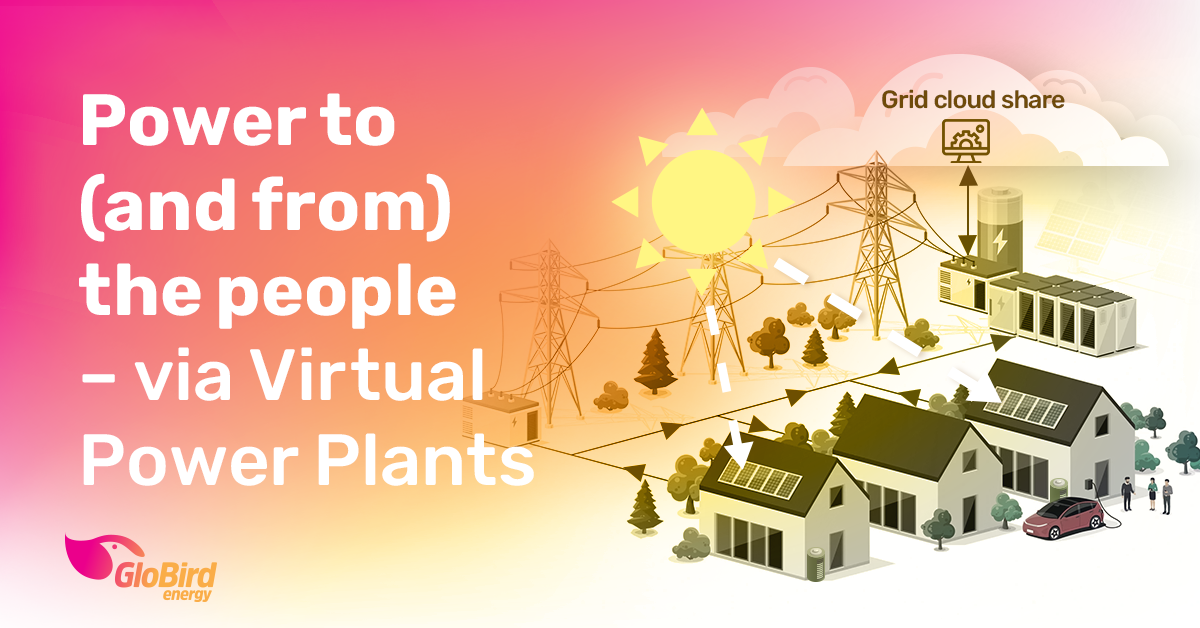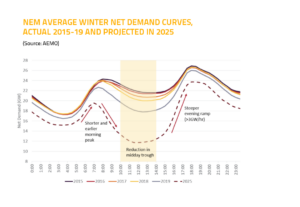Are you considering installing a rooftop solar array? Do you already have rooftop solar but haven’t decided whether to add a battery to your setup? Or perhaps you have a solar and battery system already and wondering if you are getting the most out of it?
What if we told you that you could play a part in solving one of the major challenges of the energy transition and at the same time drive greater returns on your system investment? Would that help you decide to go ahead?
Solar energy has been an incredibly important addition to the energy mix over the past 15 years, with well over 3.6 million systems now installed, and it will continue to be the key component in our renewable energy future for some time.
However, right now, Australia is grappling with the issue that, due to the impressive penetration of rooftop solar, we go from an overabundance of energy when the sun is shining to what’s bordering on an energy shortage after the sun goes down. This rapid change can strain the electricity network at times, with potential quality and reliability impacts, as well as contributing to greater infrastructure investment.
The Duck Curve needs to be flattened
There was a time, not so long ago, when demand for energy from the grid was relatively flat across the day. A little peak here, a small trough there, but more or less consistent.
As more and more rooftop solar came into the mix, the demand on the grid in daylight hours gradually decreased. However, once the sun went down, the peak became a real spike.
Year by year, the divergence between daytime demand and evening demand has increased. When the change in demand across a 24-hour period is graphed, and the lines of the graph across the past 10-15 years are compared, the graph increasingly looks like the outline of a duck, with the head and beak representing the evening peak.
Battery storage is a big part of the solution
What do you do if you have a lot of something but can’t use all of it at the time? You store the excess for use later (or perhaps sell or give away some of your surplus in the hope that someone else will return the favour when they have more than they need, and you don’t).
Storing some of the solar energy you’re collecting via your rooftop panels makes a lot of sense on a number of levels. Holding on to that energy so that it’s available when it’s needed saves having to generate the equivalent amount from other sources. That’s a significant contribution to saving the planet.
Of course, there are more and more households installing an array of rooftop panels with a battery, but it will be some time before there are enough individual batteries to make the difference that we would like to see.
At the same time, an individual household with battery storage is unlikely to fully utilise the amount of solar energy it’s able to collect, so there is still some inefficiency and wastage.
Teamwork is the answer
Whether it’s footy teams or orchestras, effective coordination always delivers much better outcomes than having a whole bunch of individuals doing different things.
This is very much the case in terms of a Virtual Power Plant (VPP). A VPP connects lots of controllable devices, like residential battery systems, via a cloud-based software technology (hence being ‘virtual’ as opposed to ‘actual’), which just like an actual power plant can be operated at times of peak and extreme demand.
Most of the time, VPP participants are still using the majority of the power generated and stored in their system.
The critical difference with a VPP is that your system operation is coordinated to supply your loads in concert with peak electricity network and wholesale energy market events (rather than the default “basic” system settings).
During rare extreme events, a VPP may direct connected devices to operate at their maximum output with any surplus energy exported to support the local electricity network.
By allowing this optimised control during peak and extreme events, VPP participants receive extra rebates and credits to further reduce their electricity bill and drive greater overall returns from their solar and battery system investment … as well as contributing to “flattening the duck curve”.
GloBird Energy is onboard with VPPs
GloBird Energy continues to run extensive VPP pilot trials via its in-house battery systems test centre and at various customer trial locations, and we can see the potential for a much larger, more sustainable, greener, more efficient, and cheaper energy system.
Because VPPs provide renewable energy to the grid during times of peak demand, the result is a more stable, balanced network and reduced reliance on fossil fuels. Not to mention that the more Australia is able to effectively implement VPPs, the less likely that we’ll need to build more actual power plants in the future.
While our own test was relatively small, it proved that technology and battery storage can help solve the Duck Curve. We’re ready and eager to contribute to the movement toward a more sustainable, greener, and more positive energy system.
After all, the twin goals of cheaper power and reliable green energy continue to be our focus and we’re convinced that they are achievable via a network of locally based VPPs.
VPPs are the logical next step
VPPs are steadily gaining popularity. Some see them as the solution to more sustainable energy, others believe they are the best way to lower energy prices. Since the first VPP project of significant scale ran in Adelaide from August 2016 to September 2019, there have been successful projects all over Australia.
Some have been initiated and managed by state or local government authorities and others by electricity providers. For example, Solar Victoria is running a VPP Pilot Program until 31 December 2024.
VPPs can be characterised as a classic win-win, as providers benefit from the flexibility and efficiency of a solar battery network, while participants can enjoy lower electricity bills and a shorter payback period on their solar and storage investment.
As Solar Victoria explains it: “Not only will you and your community benefit from a reduced reliance on grid energy, fewer disruptions and more stable services, ultimately, you will benefit from cheaper power.”

